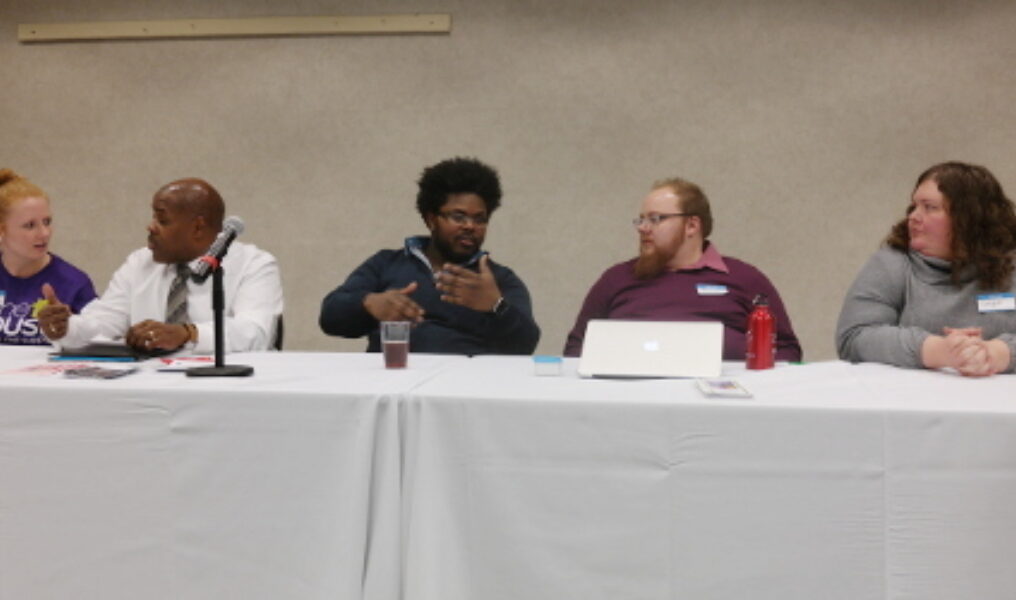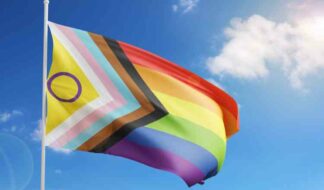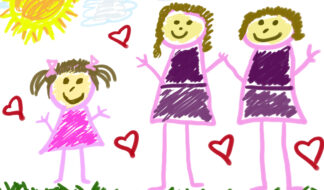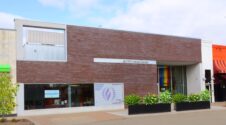BY AJ TRAGER
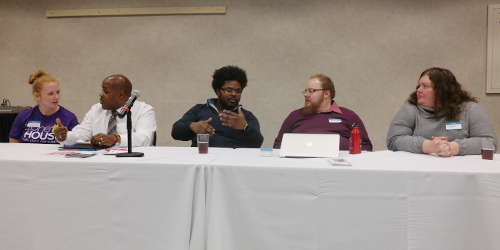
Panelists Stephanie Peck, Ken Marks, Jonah Thompson, Erich Pitcher and Suzie Staley give Ypsilanti, Michigan audience members deeper insight into the disparities impacting LGBT homeless youth on Feb. 12. (BTL Photo: AJ Trager)
YPSILANTI – In the third program put on by Eastern Michigan University's Equality Research Center, the Michigan Department of Human Services and leading LGBT youth coordinators discussed on Feb. 12 how homelessness disproportionately impacts LGBT youth.
The Michigan Department of Education has found that 8.6 percent of youth in Michigan's schools identify as being members of the LGBT community, a growing number from previous statistics. However, 40 percent of homeless youth identify as LGBT.
Ken Marks, youth services contract administrator in housing resources for the Michigan Department of Human Services, was the first to discuss his position working with 24 homeless youth and runaway agencies throughout the state, stretching across 63 counties. He monitors budgets of over $12 million that are allocated to homeless youth and runaway programs.
"One of the areas that is unique is the LGBT population that is underserved because many of the contractors who do the work are somewhat just learning what the needs are in terms of researching, and a lot of, 'Let's keep this under the table and not talk about it until they surface in our area,'" Marks said. "They are providing services so it shouldn't matter who you are, where you come from, what your gender identity is or anything else; it matters that you are a person who is looking to be served through the state of Michigan's contracted agencies."
Those providers are paid to help end homelessness in Michigan. Marks's job is to ensure that everyone is identified as a person, even though LGBT youth repeatedly report not feeling comfortable with state and municipal assistance.
The other four panelists were Erich Pitcher, teen LGBT coordinator at Michigan State University and co-facilitator of TRUE: Teens Respecting and Understanding Each Other, an LGBT youth group in Lansing; Suzie Staley, director of youth mentorship at the Henry Ford Museum and Greenfield village who works with at-risk high school students in the Wayne/Westland school district where they are placed with mentors and learn marketable job skills; Stephanie Peck, an intern at Ozone House; and Jonah Thompson, LGBT programs coordinator for the Neutral Zone. All work directly with the LGBT youth who are most impacted by homelessness. Staley reports that up to 90 percent of the kids currently enrolled in her program have experienced homelessness at some point, with 50 percent of them currently falling under that demographic.
"My role is to constantly be an advocate for the fact that youth have an ability to state where they are, what it means to them and what they need. It's not my job to say, 'It is or isn't valid (what they are saying),' but to actually step back and be a bridge for them. So that they can get the resources that they need," Thompson said about his experience with Riot Youth, a program that engages LGBT youth through leadership building skills, community organizing, networking and socializing.
It's not uncommon, as advocates and leaders, to have youth express to them that they have nowhere to stay because they are LGBT identified. These scenarios can last for just one day until the youth returns home, but homelessness can often extend six months to a year.
"If it's just one day, it's one day too many," Thompson said.
Homelessness is an economic and social outcome that could stream from avenues such as rejection, fear or a sense of emergency for LGBT youth.
"The lack of safe and stable housing is not merely fodder for liberals. Even liberals are not where they need to be surrounding the issues such as sexual orientation and gender identity, especially from an intersectional space discussing the racial lives and the class experiences of young people today who may identify along a wide spectrum of gender identity and sexual orientations," Pitcher said.
Housing is a human right. The lack of security and stability can have lasting repercussions for individuals who find themselves without a welcoming roof over their head.
"The safety net that is supposed to be provided is broken, has too many holes and is otherwise inefficient and ineffective," Pitcher said. "It's a problem that is endemic to our society. This is part of a capitalist system. Those who are invariably the most vulnerable are ordered and sorted and allocated fundamental basic human rights according to that ordering and sorting."
Pitcher himself would argue that the number one issue facing the LGBT community is a human rights one, such as the right to live in a space that is both safe and affirming.
"It is important for us to draw our attention to whom we think most often ends up in a place of vulnerability. And those are individuals who are both racially minoritized and have a gender minoritized identity," Pitcher said.
Organizations like Ozone House, the Neutral Zone and Ruth Ellis Center all share resources.
After the panel discussion, the audience broke into roundtable discussions guided by nine questions from personal assumptions on LGBT youth and how they are treated to what, if anything, could better help the youth before and after they fall into homelessness. Localizing and personalizing the dialogue changes hearts and minds on difficult, stigmatized subjects like homelessness.
